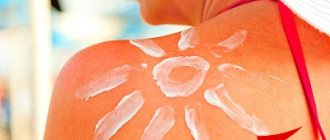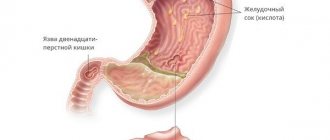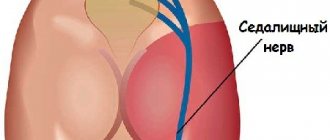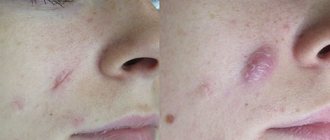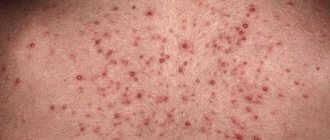Classification of caries
Caries can be divided according to several criteria.
The first involves the classification of caries into:
- Acute – affects young people with wide dentinal tubules who have not yet fully mineralized the enamel
- Chronic – this form of caries is more common in adults
- Frozen – sometimes, under the influence of intensive dental hygiene, it is possible to stop the development of the disease
Division according to clinical picture:
- Primary caries – appearing for the first time.
- Secondary caries - appears next to a filling or crown.
- Recurrent caries – forms under a filling or crown.
- Atypical caries - appears on teeth devoid of living pulp.
- Hidden caries - develops on the chewing surface and is detected during x-ray examination.
- Blooming caries is a dangerous form of caries, as it is manifested by the simultaneous occurrence of pathological changes on many teeth. Extensive damage causes intolerance to cold and hot stimuli.
- Bottle caries is a special form of tooth decay that appears on the baby teeth of babies and young children who sleep with a bottle filled with a sweetened drink (including milk), and in children who use a sweetened pacifier.
- Root caries develops on the surfaces of exposed tooth roots. Protruding tooth roots contribute to the accumulation of plaque along the gum line.
Division by stage of development:
- Initial caries is the first stage of caries development. It's reversible.
- Superficial caries – leads to irreversible damage to the enamel.
- Medium caries - dentin is destroyed, which becomes brown or black.
- Deep caries - damage reaches the pulp, causing pain and, often, the formation of abscesses. The death of the nerves and the entire tooth occurs.
Classification of the carious process according to the depth of the lesion
Dentists consider this classification of caries to be the most convenient. Therefore, it has become widespread in the domestic space. Experts distinguish forms of the disease related to uncomplicated and complicated course of the disease:
- The stain stage is the initial stage when white stripes or dark spots appear on the enamel, but it itself is smooth to the touch and is not yet susceptible to destruction. Toothache at this stage of the stain does not bother the patient.
- Superficial caries is the second stage of the carious process. Tooth enamel continues to deteriorate, but caries does not yet extend beyond the enamel layer. The dentin is not damaged, however, periodic toothache may already manifest itself. The reaction of the tooth to cold and hot, sour or sweet is noticeable. A carious stain on the tooth surface is rough to the touch.
- Moderate caries , when the carious lesion has passed the enamel layer and affected the upper layers of dentin. The pain intensifies and is constant.
- Deep caries , in which only a thin layer of dentin is preserved. At this stage, the dental tissue is severely damaged. Lack of proper tooth treatment at this stage causes pulp damage and periodontitis.
Causes of dental caries
It was found that the development of carious changes is due to four factors:
- Cariogenic diet, which provides bacteria with an enzymatic substrate (sugars).
- The presence of microorganisms that convert carbohydrates in dental plaque into acids.
- The sensitivity of the enamel surface to decalcification, resulting from the composition of that surface.
- Interaction of factors 1 and 2.
Treatment of dental caries
The method of treating a tooth is determined by its condition - the more tooth decay, the stronger the caries, the deeper and more radical the treatment used.
Basically, treatment consists of removing the diseased tooth structure and replacing it with another material. Sometimes root canal treatment or even tooth extraction is required.
Recently, chewing sugar-free gum has become a fashionable method, increasing the pH level. Chewing causes increased production of saliva, which mechanically cleanses the teeth. However, you should not chew it for more than 5-10 minutes.
However, it must be clearly stated that the main principle is the prevention of caries, which will avoid troubles and painful visits to the dentist.
Superficial caries, what will happen if you stop caries at the very beginning
If you carefully examine a tooth with superficial caries in a strong stream of bright light, you will see matte whitish spots, so-called chalky spots, on the smooth, shiny surface of the enamel. They are especially noticeable in the rays of a dental lamp; it contains special lamps with a selected spectrum and radiation intensity, so dentists immediately notice chalky spots during examination.
The reason for their appearance is superficial decalcification of the enamel layer. The enamel loses minerals and becomes porous. The spots are easily stained with special dyes and this method should be used by doctors as often as possible during examination.
Superficial caries is reversible and can be cured. There are many methods and preparations for this; it usually takes 2-4 visits to ensure that the chalky lesion is removed. One of the effective methods is the impregnation of enamel and dentin with ICON. Before treating enamel and dentin with Ikon, deep mineralization is carried out - solutions of minerals and preparations such as “enamel-sealing liquid”, Gluftored are successively applied. On chewing teeth, it is desirable to coat the dentin with a layer of nanosilver.
Sometimes superficial caries cures on its own, or more precisely, caries becomes stable and its progress slows down sharply. But in this case, the chalky stain becomes pigmented, and the tooth itself darkens. It is with the treatment of superficial caries that the concept of inexpensive dentistry begins. Preventing the formation of a carious cavity means getting rid of pulpitis treatment in the future. The disease is easier and cheaper to prevent.
Average caries
This next stage of the carious process is characterized by the appearance of a cavity in the dentin of the tooth. Decalcified enamel is no longer a protection for softer dentin; microorganisms invade its tubules and the carious process itself begins. A cave-shaped or bottle-shaped cavity characterizes dental caries. Remains of enamel cover the cavity in the tooth like a roof; this makes it difficult for oral fluid and a toothbrush to enter it and clean it from germs and decomposing food debris. As a result of fermentation processes, acids accumulate in the cavity, dissolving enamel and dentin, and the carious process accelerates sharply. The first pain symptoms appear. The tooth reacts to temperature changes and to sweets. The pain goes away quickly after rinsing the mouth. Treatment of average caries consists of applying a filling to the formed cavity. There are many methods and approaches to filling teeth. There are even more filling materials available. In general, it is mandatory to clean the tooth cavity from softened dentin and antiseptic treatment of the cavity. In addition to a conventional drill, laser, ultrasound, and chemical agents that dissolve dentin are widely used. For the most part, so-called heliocomposite light fillings are used. They have proven their reliability and high aesthetics, especially when treating anterior teeth and when used according to indications. A good light filling stops dental caries for a long time.
What determines the cost of a filling? How to find really inexpensive dentistry? The name of the filling material is important for the patient. Types a request on the Internet - INEXPENSIVE QUALITY SEAL and lo and behold, it is so. The manufacturer did not skimp and poured a lot of money into advertising so that the patient could be convinced that it is so, here it is, the treasured one, reliable and inexpensive. In fact, the cost of a filling is determined not only by the light material itself, but also by the technology for treating and filling the tooth.
The cost of caries treatment in Samara in our clinic is 2000 rubles. This includes dental anesthesia, modern light filling material and all manipulations necessary for treatment
Deep caries
This is the stage of the disease in which the dentin layers covering the pulp are affected. The dentin itself is soft, discolored, and can be easily removed in layers with any dental instrument. The tooth reacts to irritants with a long, aching pain. Sometimes a person takes analgesics for a long time.
Treatment of deep caries.
For centuries now, dentists have been trying to preserve the tooth pulp when treating deep caries, but the failure rate is still higher than the statistical average. Why can a tooth hurt later? There are many reasons for this, the main ones being the difficulty of determining the thickness of the remaining dentin and the degree of infection of the pulp. Most clinics in Samara recommend depulping the tooth.
We follow the same strategy. In any case, the patient will be spared unnecessary suffering in the future. After all, if a tooth hurts later, its treatment will proceed against the background of severe toothache and difficulties with pain relief, the cost of tooth treatment will be prohibitively high.
Prevention of caries
Caries prevention focuses on:
- changes in eating habits
- changing the oral environment to reduce acid formation
- increasing the resistance of the enamel surface to dissolution
The above areas of prevention seem very simple, but they are not so easy to implement. It is impossible to eliminate the two main factors of caries - sugar and bacteria in the oral cavity. Microorganisms are constantly present in the oral cavity, and it is impossible to completely eliminate carbohydrates from the daily diet.
Proper oral hygiene
The basis for preventing the development of dental caries is oral hygiene.
There are a few rules you should follow to effectively clean your teeth:
- Brush your teeth at least twice a day with fluoride toothpaste, especially after breakfast and before bed.
- You should floss your teeth daily.
- It is necessary to limit the number of snacks during the day.
- It is necessary to visit the dentist regularly.
We must not forget about the correct technique for brushing your teeth .
First, set the toothbrush at an angle of 45 degrees relative to the line of the teeth and gums, and then use translational and rotational movements to clean the outer surface of the teeth. Then we clean the inner and chewing surfaces of the tooth using forward and backward movements. Finally, use a toothbrush to clean your tongue to remove bacteria accumulated on it and freshen your breath.
Proper brushing of teeth lasts at least 2-3 minutes. Most adults brush their teeth a lot. To find out how long the brushing should take, start the stopwatch.
The choice of toothbrushes is also very important. Everyone must individually choose the shape and size of the brush. Most dentists agree that soft-bristled toothbrushes are better at removing plaque and food debris. It is also recommended to use toothbrushes with flexible heads that allow easy access to all areas of the mouth, including hard-to-reach back teeth.
The toothbrush should be replaced when wear appears or every 3 months, whichever occurs first. It is very important to change your toothbrush regularly because the bristles accumulate microorganisms that can cause re-infection.
Diet to prevent tooth decay
Dietary rules for caries prevention are as follows:
- limiting the consumption of sweets and sugary drinks
- combating the very bad habit of consuming sweets and sugary drinks between meals
- The diet should be dominated by solid, grainy and even fibrous foods, including fresh fruits and vegetables, and between meals apples, nuts, carrots and sandwiches with cheese, cottage cheese, and sausage are recommended
- chewing gum for 5-10 minutes after eating
Diagnostics
It is almost impossible to independently diagnose caries at the initial stage, which is why the norm is to visit the dentist twice a year. It is during a preventive examination that an experienced doctor will be able to promptly notice the beginning of dental damage.
Diagnosis is carried out both by visual examination of the oral cavity and by using a special probe to detect small carious cavities on the surface of the enamel. To detect caries on the contact surfaces of tooth enamel in places hidden from view, the doctor may refer the patient for an x-ray examination.
Caries begins completely unnoticed with the formation of a small light spot on the enamel; in this place, the tooth enamel has become looser and no longer protects the tooth. At an early stage, the patient does not experience discomfort, the tooth does not hurt, and does not react to hot or cold food. However, if you do not pay attention to the early symptoms, caries can lead to complete destruction of the tooth, which will have to be removed.

